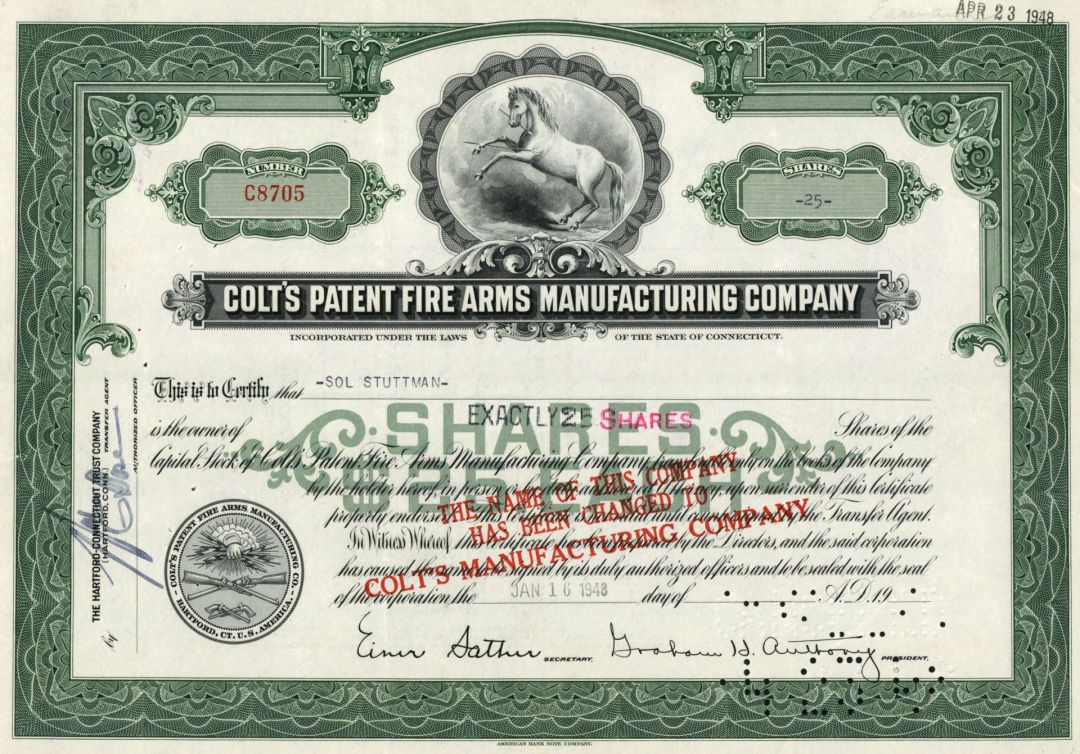Colt's Patent Fire Arms Manufacturing Co. - 1940's dated Gun Stock Certificate - Green Color Type
Inv# GN1003 StockFamous gun manufacturer. Stock printed by American Bank Note Co. Great!! Colt's Manufacturing Company, LLC (CMC, formerly Colt's Patent Firearms Manufacturing Company) is an American firearms manufacturer, founded in 1855 by Samuel Colt. It is the successor corporation to Colt's earlier firearms-making efforts, which started in 1836. Colt is known for the engineering, production, and marketing of firearms, most especially between the 1850s and World War I, when it was a dominating force in its industry and a seminal influence on manufacturing technology. Colt's earliest designs played a major role in the popularization of the revolver and the shift away from earlier single-shot pistols. Although Samuel Colt did not invent the revolver concept, his designs resulted in the first very successful ones.
The most famous Colt products include the Colt Walker, made in 1847 in the facilities of Eli Whitney Jr., the Single Action Army or Peacemaker, the Colt Python, and the Colt M1911 pistol, which is currently the longest-standing military and law enforcement service handgun in the world and is still used today. Though they did not develop it, for a long time Colt was also primarily responsible for all AR-15 and M16 rifle production, as well as many derivatives of those firearms. The most successful and famous of these are numerous M16 carbines, including the Colt Commando family, and the M4 carbine. Read more at https://en.wikipedia.org/wiki/Colt%27s_Manufacturing_Company
A stock certificate is issued by businesses, usually companies. A stock is part of the permanent finance of a business. Normally, they are never repaid, and the investor can recover his/her money only by selling to another investor. Most stocks, or also called shares, earn dividends, at the business's discretion, depending on how well it has traded. A stockholder or shareholder is a part-owner of the business that issued the stock certificates.










Ebay ID: labarre_galleries